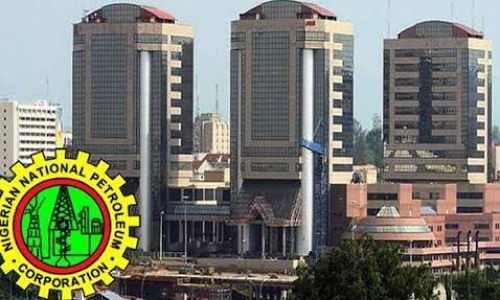Oil
Are low oil prices here to stay?

Predicting the oil price is a bit of a mug’s game.
There are simply too many variables involved to make any kind of meaningful, definitive forecast.
What we do know is that, despite a recent upturn, the price of oil has slumped almost 50% since last summer following the longest-running decline for 20 years.
And we know why – US shale oil, and to a lesser extent Libyan oil returning to the market, has pushed up supply while a slowdown in the Chinese and EU economies has reduced demand.
Add to the mix a strong US dollar making oil more expensive in real terms, pushing demand even lower, and you have a recipe for a plummeting oil price.
What happens next is a little harder to see.
With the booming US shale industry showing little signs of slowing, and growing concerns about the strength of the global economy, there are good reasons to suspect that the current slump in the oil price will continue for some time.

This is precisely when Opec, the cartel of major global oil producers, would normally step in to stabilise prices by cutting production. It has done so many times in the past, so often in fact that the market expects Opec to intervene.
This time it hasn’t. In a historic move at the end of last year, Opec said not only that it would not cut production from its 30 million barrels a day (mb/d) quota, but had no intention of doing so even if oil fell to $20 a barrel.
And this was no empty threat. Despite furious opposition from Venezuela, Iran and Algeria, Opec kingpin Saudi Arabia simply refused to bail out its more vulnerable cohorts – many Opec members need an oil price of $100 or more to balance their budgets, but with an estimated $900bn in reserves, Saudi can afford to play the waiting game.
Opec now supplies a little over 30% of the world’s oil, down from almost 50% in the 1970s, partly due to US shale producers flooding the market with almost 4 mb/d from a standing start 10 years ago.
“Given this scenario, who should be expected to cut production to put a floor under prices?” Opec argued last month.

Equally, Saudi is not prepared to sacrifice more market share while its competitors, not least US shale oil producers, prosper. Safe in the knowledge that it can withstand very low oil prices for the best part of a decade, it would rather stand back and, as Philip Whittaker at Boston Consulting Group says, “let economics do the work”.
The implications of Opec’s decision, therefore, go way beyond sending the oil price crashing even further.
“We have entered a new chapter in the history of the oil market, which is now starting to operate like any non-cartel commodity market,” says Stuart Elliott at energy specialist Platts.
The fallout has been immediate in many parts of the industry, and promises to wreak further havoc in the coming months and, quite possibly, years.
 Saudi Arabia’s decision not to cut production did not go down well with some Opec members
Saudi Arabia’s decision not to cut production did not go down well with some Opec members‘Serious risks’
Without Opec artificially supporting the oil price, and with potentially weaker demand due to sluggish global economic growth, the oil price is likely to remain below $100 for years to come.
The futures market suggests the price will recover slowly to hit about $70 by 2019, while most experts forecast a range of $40-$80 for the next few years. Anything more precise is futile.
At these kinds of prices, a great many oil wells become uneconomic. First at risk are those developing hard to access reserves, such as deepwater wells. Arctic oil, for example, does not work at less than $100 a barrel, says Brendan Cronin at Poyry Managing Consultants, so any plans for polar drilling are likely to be shelved for the foreseeable future.
World’s top oil producers, 2014 (million barrels a day)
- US: 11.75
- Russia: 10.93
- Saudi Arabia: 9.53
- China: 4.20
- Canada: 4.16
- Iraq: 3.33
- Iran: 2.81
- Mexico: 2.78
- UAE: 2.75
- Kuwait: 2.61
Source: IEA
North Sea oil production is also at serious risk, certainly in terms of new wells that need an oil price of about $70-$80 to justify drilling. Indeed in a recent interview with Platts, the head of Oil & Gas UK said at $50, North Sea oil production could fall by 20%, dealing a hammer blow not just to the companies involved but to the Scottish economy as a whole.
Exploration into unproven reserves in regions such as Southern and West Africa will also grind to a halt.

The price of oil has halved over the past eight months – but what’s the real cost of cheap oil? The BBC’s correspondents around the world look at who’s benefiting and who’s hurting from the shock fall in oil prices. Follow their reports on TV, on radio and online.
Questions are also being asked about fracking. Costs vary a great deal, but research by Scotiabank suggests the average breakeven price for US shale producers is about $60. At the same price, energy research group Wood Mackenzie estimates that investment in new wells would halve, wiping out production growth.
“The vast majority [of US shale wells] just don’t work at $40-$50,” says Mr Cronin.
Oil majors are already suffering, having announced tens of billions of dollars of cuts in exploration spending. But while the share prices of BP, Total and Chevron are all down about 15% since last summer, the majors have the resources to see out a sustained period of low oil prices.
There are hundreds of other much smaller oil groups across the world with a far more uncertain future, not least in the US. Shale companies there have borrowed $160bn in the past five years, all predicated on selling oil at a higher price than we have today. Banks’ patience can only be tested so far.
Oilfield services companies are also “feeling severe pain”, according to Mr Whittaker, with share prices in the sector down an average 30%-50%. Last month, US giant Schlumberger announced 9,000 job cuts, some 8% of its entire workforce.
But it’s not just oil companies that are being hit by lower oil prices – the renewables sector is suffering as well.
In the Middle East and parts of Central and South America, oil is in direct competition with renewables to generate electricity, so solar power in particular will suffer at the hands of cheap oil.
Fuel price calculator

See how much petrol and diesel costs around the world
Elsewhere, falling oil prices are helping drive down the price of gas, the direct rival of renewables. Subsidies, therefore, may have to rise to compensate.
Indeed lower oil and gas prices undermine a fundamental economic argument propounded by many governments to support renewables – that fossil fuels will continue to rise in price.
The impact is already being felt – shares in Vestas, the world’s largest wind turbine manufacturer, are down 15% since the summer, while those in Chinese solar panel giant JA Solar have slumped 20%.
Lower oil prices are also a grave concern for electric carmakers, with sales of hybrids in the US falling while those of gas-guzzling SUVs surge.
‘Profound impact’
The knock-on effects within the energy industry of a sustained period of lower oil prices are, then, both widespread and profound.
But while Saudi Arabia’s decision to call time on supporting the oil price marks an important milestone in the industry, oil’s self-stabilising price mechanism remains very much intact – prices fall, production drops, supply falls, prices rise.
 Many US shale wells are not profitable when the price of oil is below $60 a barrel, experts say
Many US shale wells are not profitable when the price of oil is below $60 a barrel, experts sayAs a direct result of lower prices, exploration and production will be curtailed, and while it may take a number of years to filter through, supply will fall and prices will rise. After all, while there may be hundreds of new small suppliers entering the fray, there are still too few big players controlling oil supply for a truly free market to develop.
But real change is on the way. There is a growing realisation that fossil fuels need to be left in the ground if the world is to meet climate change targets and avoid dangerous levels of global warming.
Against this backdrop, it is only a matter of time before a meaningful carbon price – hitting polluters for emitting CO2 – is introduced, a price that will have a profound impact on the global oil market.
Equally, for the first time oil is facing a genuine competitor in the transport sector, which currently accounts for more than half of all oil consumption. Electric vehicles may be a niche market now, but as battery technology in particular advances, they will move inexorably into the mainstream, significantly reducing demand for oil.
The oil market is undergoing significant transformation, but more fundamental change is on the horizon.
Gas
Platform Petroleum targets a billion-dollar investment

Announces ambitious expansion plans
Platform Petroleum says the company is targeting a billion-dollar investment as it announces an ambitious strategic plan to bring 3 marginal fields into production by 2025, with a target of 10,000 barrels of oil and at least 50 billion standard cubic feet of gas per day.
Speaking on the sidelines of the 2024 Offshore Technology Conference (OTC) in Houston, USA, Chief Dumo Lulu-Briggs, Chairman of Platform Petroleum said that the company has scheduled a roadshow in London this June 2024 to raise extra funding to finance their ambitious expansion plans.
“The upcoming roadshow aims to attract equity partners and prepare for future opportunities, targeting a billion-dollar investment. We are seeking partners ready to invest in Nigeria’s oil and gas potential.
Our goal is to showcase the country’s vast opportunities and its potential to international investors” Lulu-Briggs said.
Platform Petroleum’s roadshow in London will highlight the company’s efficient production, upgraded flow stations, increased capacity, and achievements in nearly zero emissions.
With about one percent gas flare currently, Platform aims for zero gas flares by the last quarter.
“Nigeria is a vast market, and Platform Petroleum is thinking big. With the government’s ambitious plans, such as the Lagos-Calabar coastal line, Platform is poised for growth; pushing itself to the next level, building on a strong foundation and following Seplat’s successful precedent”, Lulu-Briggs said.
Despite being a small company, he emphasized that Platform Petroleum has demonstrated significant success and efficiency, showcasing that smaller oil and gas entities can indeed achieve remarkable feats adding that he believes that the company deserves recognition and more assets.
“Platform Petroleum is ambitious, aspiring to become a tier-1 company akin to international oil companies (IOCs) or a tier-2 company like Seplat. Interestingly, Seplat originated from Maurel & Prom, Shebah Petroleum, and Platform Petroleum, and today stands as a major player in the industry.
This history underlines Platform’s potential for substantial growth”, Lulu-Briggs said.
Furthermore, the Platform Petroleum Chairman said that the Offshore Technology Conference (OTC) is a crucial event for promoting Nigeria’s significant market potential.
“Partnering with the Petroleum Technology Association of Nigeria (PETAN) at OTC is key to attracting investment. The current proactive government understands the necessity for economic growth, and Platform is prepared to leverage every opportunity in the oil and gas industry to contribute to this expansion”, he concluded.
Oil
NNPC Discovers Over 4,800 Illegal Pipeline Connections

The Nigerian National Petroleum Company (NNPC) Limited has revealed the detection of more than 4,800 unauthorized connections on oil pipelines within the country, painting a troubling image of the nation’s primary source of revenue.
Mele Kyari, the Group Chief Executive Officer of NNPC Ltd, communicated this information to the Senate Committee on Appropriations last Friday.
He said, “We have over 4,800 illegal connections on our pipelines. That means in some lines, within 100 kilometres of pipelines, you have as much as 300 insertions.
“Therefore, even when you produce the oil, you cannot deliver them at the required pressure and therefore the volume will also be less.”
As per the NNPC Ltd chief, individuals from various regions enter the Niger Delta, inserting unauthorized connections on pipelines in Nigeria’s oil-producing area.
This recent revelation follows a prior discovery of 295 illegal connections to the pipelines by the firm a year ago, underscoring the escalating issue of crude oil theft in Nigeria.
Two years earlier, Kyari had highlighted the country’s daily loss of 200,000 barrels of oil, amounting to $13 million due to theft and vandalism.
He further stated “We have two sets of losses, one coming from our products and the other coming from crude oil. In terms of crude losses, it is still going on. On the average, we are losing 200,000 barrels of crude every day.”
After the discovery, Nigeria’s security forces pledged to enhance security around the country’s pipelines.
To bolster this, the Federal Government granted a multi-billion naira pipelines surveillance contract to Tantita Security Services, headed by former militant leader Government Ekpemepulo, also known as Tompolo.
Despite facing criticism for this decision, Senator Heineken Lokpobiri, the Minister of State for Petroleum, remains convinced that it was the appropriate course of action.
In August, following a tour of oil facilities in the Niger Delta, Senator Heineken Lokpobiri expressed gratitude to Tantita, commissioned by NNPC Ltd, for their ongoing work.
He also hinted at plans for further extensive endeavors in the future.
In 2021, after extensive debate and delays, the Petroleum Industry Bill was finally passed to attract increased foreign investment into the oil sector through amendments to regulations, royalties, and taxes.
Oil
Dangote Refinery Set To Begin Fuel Production With First Crude Arrival

Nigeria’s colossal $19 billion Dangote Refinery, after encountering several setbacks, is on the verge of kickstarting fuel production.
This achievement is heralded by the arrival of the first crude shipment, transported by the OTIS tanker carrying 950,000 barrels of Nigeria’s Agbami crude.
S&P Global, citing industry sources and tanker tracking data on spglobal.com, reported the tanker’s departure on December 6, en route to Lekki, the nearest land port to Dangote’s offshore crude receiving terminal.
Scheduled to reach its destination around 8 PM on December 7, the arrival of this shipment signifies the commencement of crude supplies for the refinery’s operations.
Chartered by the state-owned Nigerian National Petroleum Company (NNPC), the Suezmax tanker is an emblem of the initial crude supply to Dangote’s cutting-edge refinery, as disclosed by a West African oil trader familiar with the matter in the S&P report.
Even though the refinery was officially completed in May, the absence of domestic crude feedstock had hindered oil product manufacturing.
To address this, the NNPC, holding a 20% stake in the refinery, struck an agreement to provide 6 million barrels of crude oil as feedstock to the Dangote refinery in December.
This move aims to jumpstart operations and overcome the previous impediments.
Agbami, operated by Chevron, holds a prominent position among Nigeria’s major deepwater developments, producing around 100,000 barrels per day in the central Niger Delta.
Known for its light sweet crude qualities, with a specific gravity of 47.9 API and a low sulfur content of 0.04%, Agbami produces substantial amounts of naphtha and kerosene.
NNPC has chartered additional shipments from different Nigerian offshore fields to the refinery, marking the start of a sequence of planned crude supplies for the month, as mentioned by the oil trader.
Located on the outskirts of Lagos, Nigeria’s commercial hub, the Dangote Refinery encountered repeated delays since its 2013 announcement, despite significant installation progress in 2019.
The refinery, designed to handle multiple crudes simultaneously, targets three Nigerian crude grades—Escravos, Bonny Light, and Forcados. When operating at full capacity, it aims to produce 327,000 barrels per day (b/d) of gasoline, 244,000 b/d of gasoil/diesel, 56,000 b/d of jet fuel/kerosene, and 290,000 metric tons per year of propane/LPG.
Dangote’s operations starting signify Nigeria’s hopes to lessen its reliance on gasoline imports, addressing the deficiencies of its existing refineries undergoing repairs. This shift is poised to reshape Nigeria’s oil industry, potentially leading to gasoline self-sufficiency by the 2040s.
Dangote officials anticipate an initial output of 370,000 barrels per day (b/d), emphasizing jet fuel and diesel production.
Industry analysts, however, project the refinery to reach its full operational capacity by mid-2025, although potential delays remain a looming concern.






















